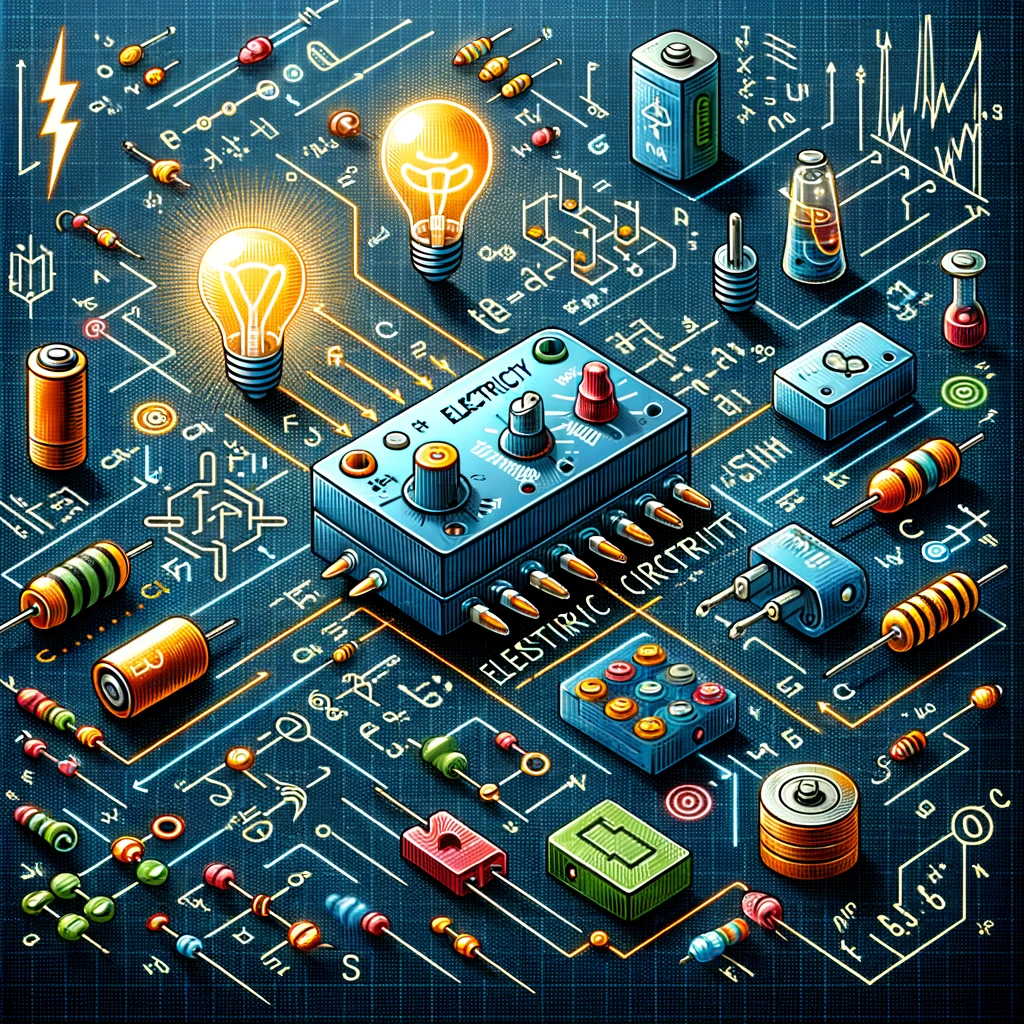
Empowering Minds: Understanding Electricity in Class 10 Science

Introduction
Electricity is a versatile and fundamental form of energy that powers the modern world. This chapter explores the principles underlying electric current and circuits, laying the groundwork for understanding how electrical devices operate and are powered.
Section 1: Electric Current and Circuits
Electric current is the flow of electric charge through a conductor, typically measured in amperes (A). Circuits provide the path through which this current flows.
Conductors and Insulators
- Conductors: Materials that allow the flow of electric charge (e.g., metals).
- Insulators: Materials that resist the flow of electric charge (e.g., rubber, plastic).
Components of an Electric Circuit
- Detailed overview of components such as resistors, capacitors, switches, and batteries, and their roles in a circuit.
Section 2: Ohm’s Law
Ohm’s law is a fundamental principle that relates the voltage (V), current (I), and resistance (R) in an electrical circuit: (V = IR).
Resistance and Resistivity
- Explanation of resistance as the opposition to the flow of electric current and how materials’ resistivity affects this resistance.
Section 3: Series and Parallel Circuits
The arrangement of components in a circuit affects the overall current and voltage distribution.
Series Circuits
- Characteristics and implications of connecting components in a series, where the current is the same through all components.
Parallel Circuits
- Features of parallel circuits, where the voltage is the same across all branches, allowing for independent operation of components.
Section 4: Electrical Power and Energy
Electrical power (measured in watts, W) is the rate at which electrical energy is transferred by an electric circuit. The energy consumed (in kilowatt-hours, kWh) is crucial for understanding the efficiency and cost of electrical devices.
Calculating Power and Energy Consumption
- Formulas and examples demonstrating how to calculate the power drawn by an appliance and its energy consumption over time.
Conclusion
Electricity is a cornerstone of technological advancement and everyday convenience. Grasping the basic concepts of electric circuits, current, and energy consumption equips students with the knowledge to explore more complex electrical and electronic systems.
Call to Action
Experiment with building simple circuits to observe Ohm’s law in action. Reflect on the importance of electrical safety and the impact of electricity consumption on the environment.